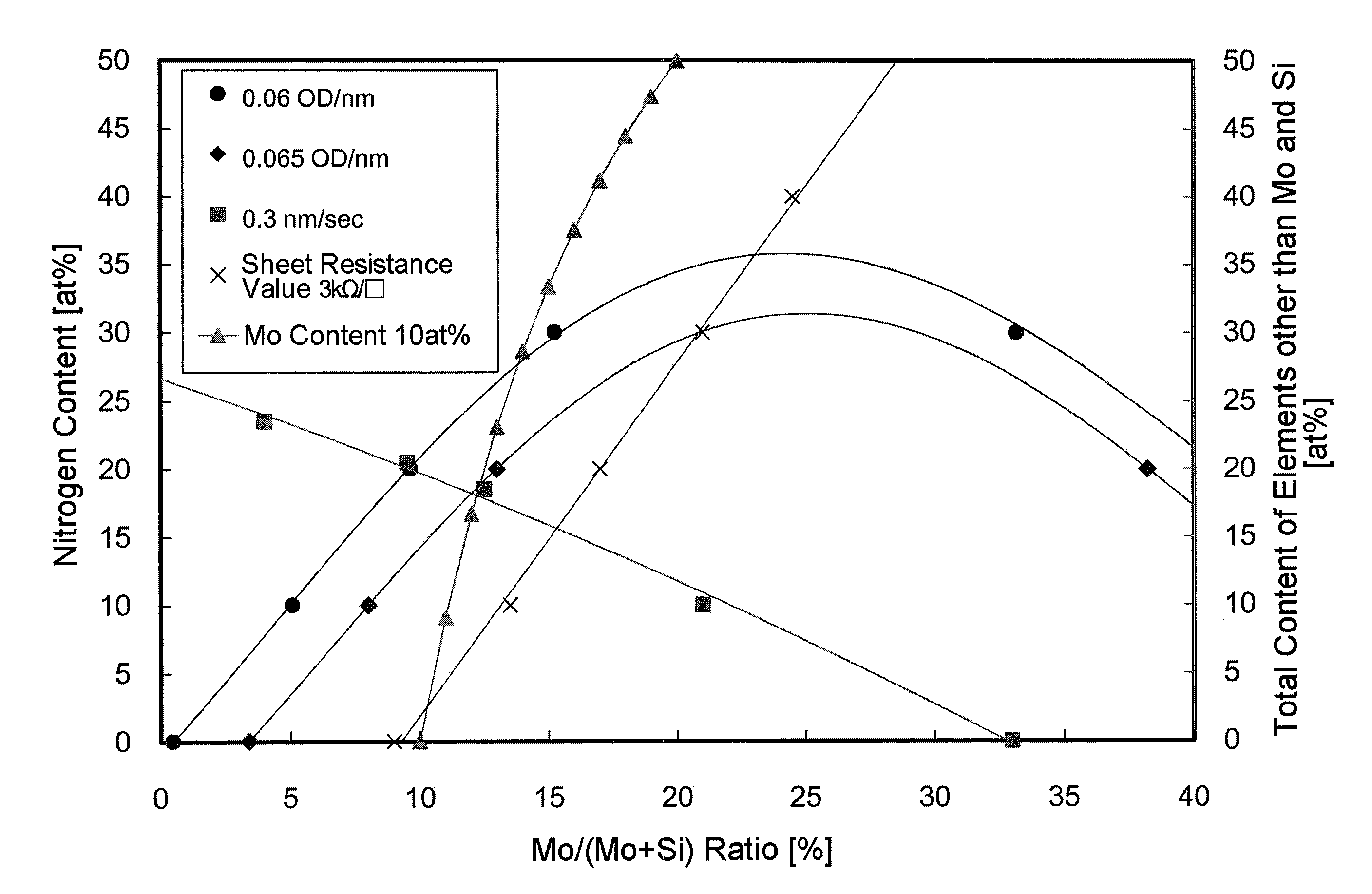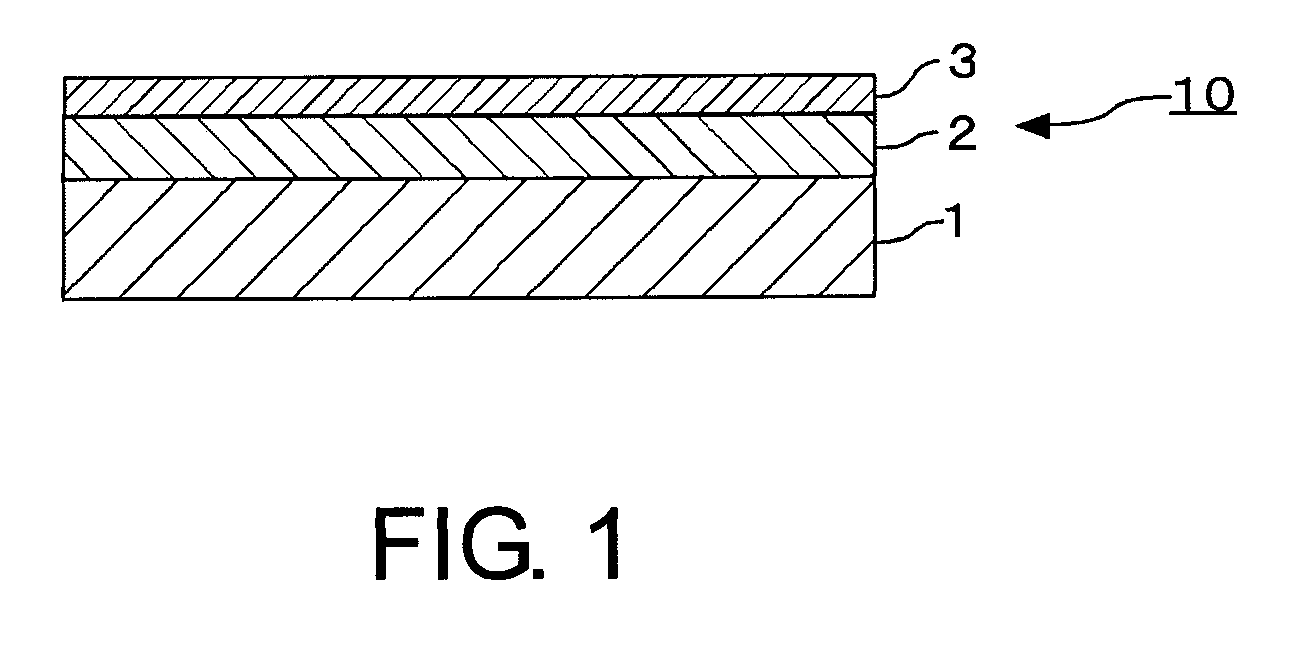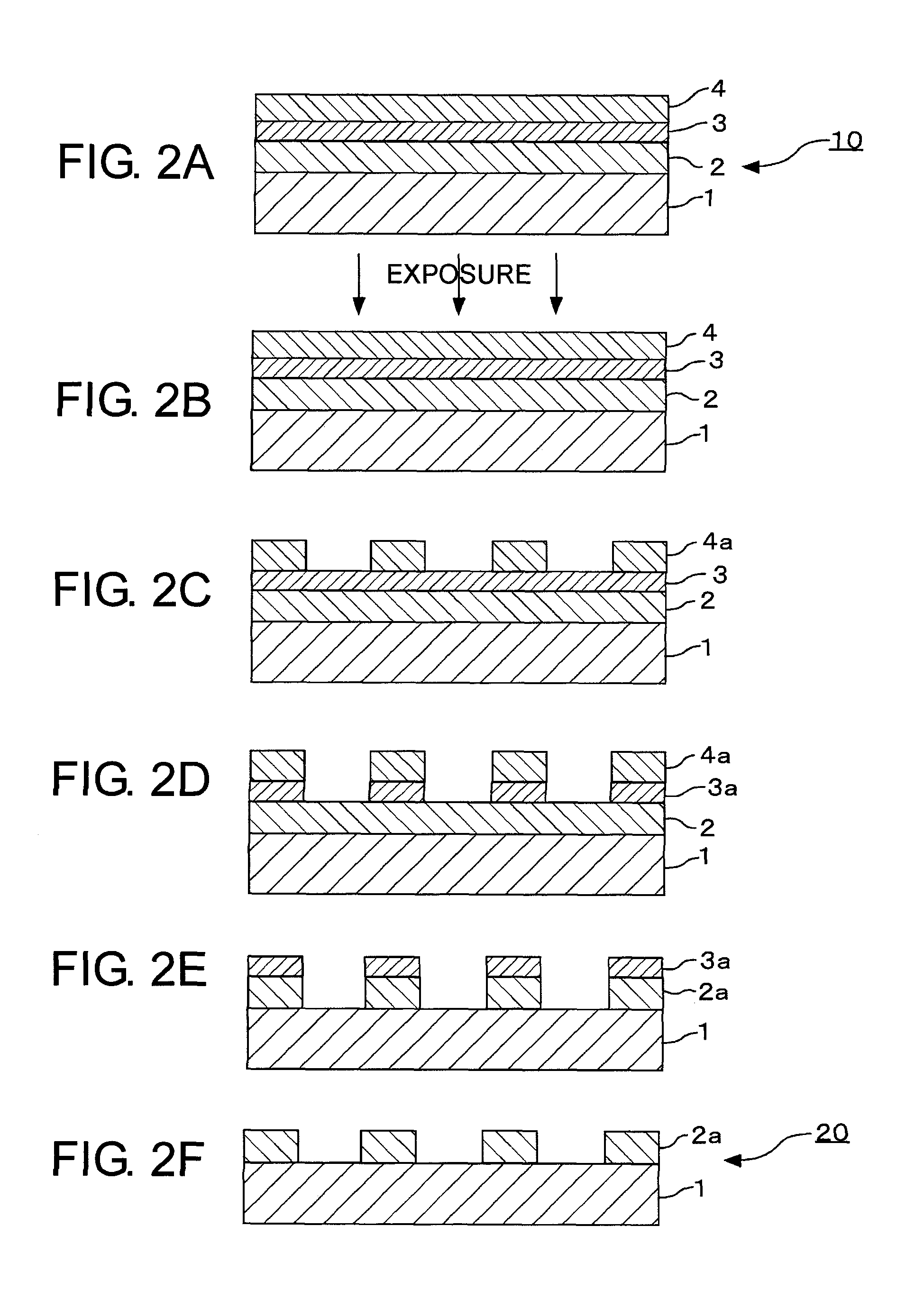Mask blank, transfer mask, method of manufacturing a transfer mask, and method of manufacturing a semiconductor device
a technology of transfer mask and mask blank, which is applied in the field of mask blank, transfer mask, and method of manufacturing transfer mask to achieve the effect of small bias
- Summary
- Abstract
- Description
- Claims
- Application Information
AI Technical Summary
Benefits of technology
Problems solved by technology
Method used
Image
Examples
example 1
[0135]In a single-wafer sputtering apparatus, using a mixed target of molybdenum (Mo) and silicon (Si) (at % ratio Mo:Si=13:87) as a sputtering target, reactive sputtering (DC sputtering) was carried out in a mixed gas atmosphere of argon and nitrogen, thereby forming a MoSiN film (lower layer (light-shielding layer)) to a thickness of 47 nm on a transparent substrate 1 made of synthetic quartz glass. Then, using a Mo / Si target (at % ratio Mo:Si=13:87), reactive sputtering (DC sputtering) was carried out in a mixed gas atmosphere of argon and nitrogen, thereby forming a MoSiN film (upper layer (front-surface antireflection layer)) to a thickness of 4 nm on the lower MoSiN film. In this manner, a light-shielding film 2 (total thickness: 51 nm) for ArF excimer laser light (wavelength: 193 nm) was formed.
[0136]Then, the substrate 1 with the light-shielding film 2 was heat-treated (annealed) at 450° C. for 30 minutes, thereby reducing the film stress of the light-shielding film 2. A sub...
example 2
[0137]In a single-wafer sputtering apparatus, using a mixed target of molybdenum (Mo) and silicon (Si) (at % ratio Mo:Si=13:87) as a sputtering target, reactive sputtering (DC sputtering) was carried out in a mixed gas atmosphere of argon and nitrogen, thereby forming a MoSiN film (lower layer (light-shielding layer)) to a thickness of 46 nm on a transparent substrate 1 made of synthetic quartz glass. Then, using a Mo / Si target (at % ratio Mo:Si=13:87), reactive sputtering (DC sputtering) was carried out in a mixed gas atmosphere of argon and nitrogen, thereby forming a MoSiN film (upper layer (front-surface antireflection layer)) to a thickness of 3 nm on the lower MoSiN film. In this manner, a light-shielding film 2 (total thickness: 49 nm) for ArF excimer laser light (wavelength: 193 nm) was formed.
[0138]Then, the substrate 1 with the light-shielding film 2 was heat-treated (annealed) at 450° C. for 30 minutes, thereby reducing the film stress of the light-shielding film 2. A sub...
reference example 1
[0139]In a single-wafer sputtering apparatus, using a mixed target of molybdenum (Mo) and silicon (Si) (at % ratio Mo:Si=13:87) as a sputtering target, reactive sputtering (DC sputtering) was carried out in a mixed gas atmosphere of argon and nitrogen, thereby forming a MoSiN film (lower layer (light-shielding layer)) to a thickness of 47 nm on a transparent substrate 1 made of synthetic quartz glass. Then, using a Mo / Si target (at % ratio Mo:Si=13:87), reactive sputtering (DC sputtering) was carried out in a mixed gas atmosphere of argon and nitrogen, thereby forming a MoSiN film (upper layer (front-surface antireflection layer)) to a thickness of 13 nm on the lower MoSiN film. In this manner, a light-shielding film 2 (total thickness: 60 nm) for ArF excimer laser light (wavelength: 193 nm) was formed.
[0140]Then, the substrate 1 with the light-shielding film 2 was heat-treated (annealed) at 450° C. for 30 minutes, thereby reducing the film stress of the light-shielding film 2. A su...
PUM
| Property | Measurement | Unit |
|---|---|---|
| refractive index | aaaaa | aaaaa |
| refractive index | aaaaa | aaaaa |
| thickness | aaaaa | aaaaa |
Abstract
Description
Claims
Application Information
 Login to View More
Login to View More - R&D
- Intellectual Property
- Life Sciences
- Materials
- Tech Scout
- Unparalleled Data Quality
- Higher Quality Content
- 60% Fewer Hallucinations
Browse by: Latest US Patents, China's latest patents, Technical Efficacy Thesaurus, Application Domain, Technology Topic, Popular Technical Reports.
© 2025 PatSnap. All rights reserved.Legal|Privacy policy|Modern Slavery Act Transparency Statement|Sitemap|About US| Contact US: help@patsnap.com



